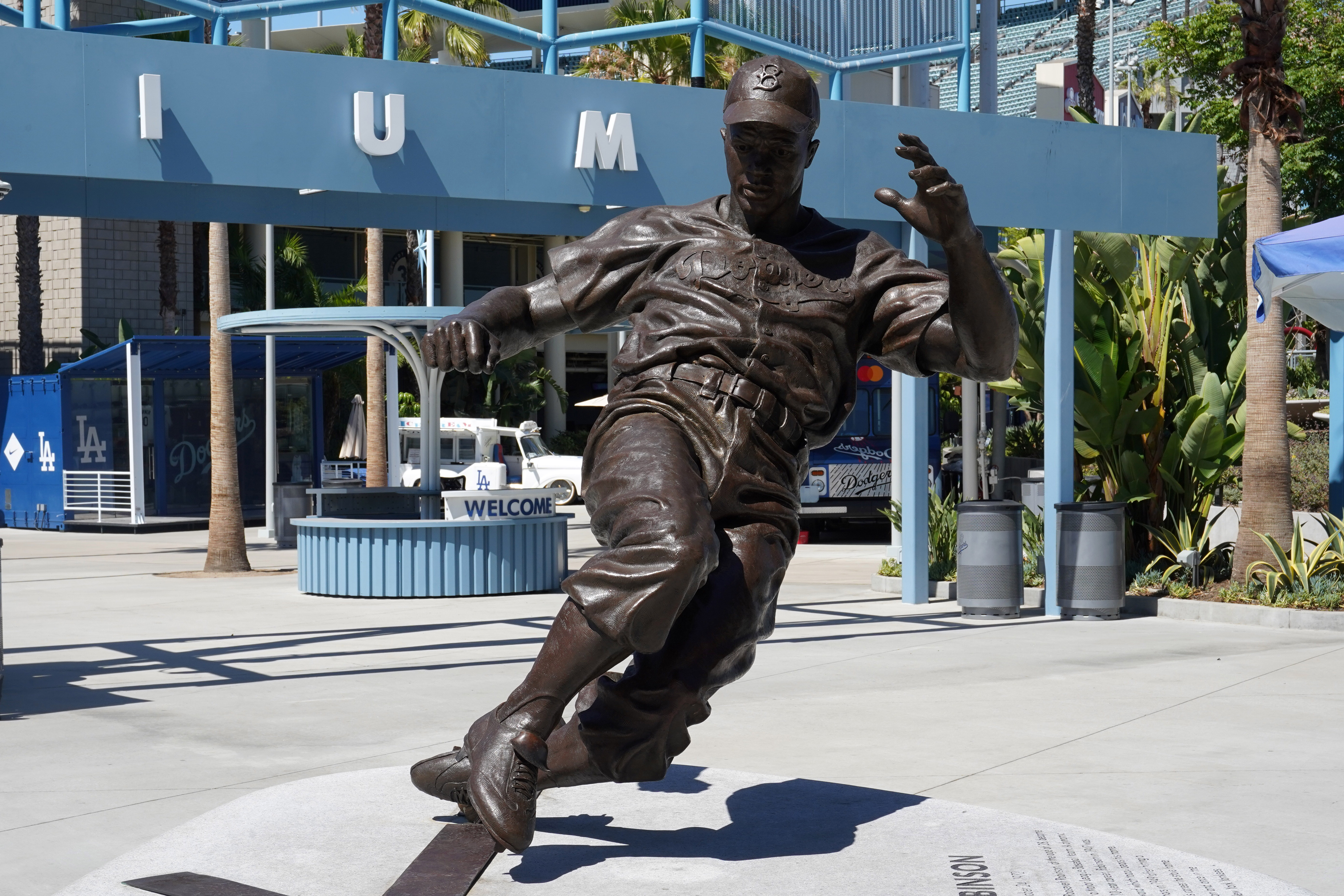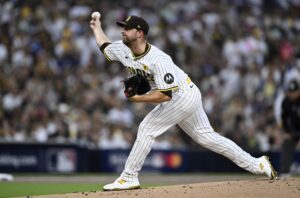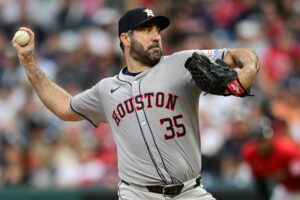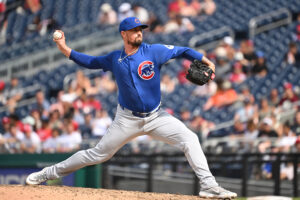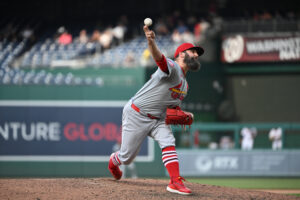Sports have never seen a rivalry as fierce and intense as that of the Brooklyn Dodgers and New York Giants. Yankees and Red Sox? Sorry, no. Michigan and Ohio State? Nope. Celtics and Lakers? Not even close. Army and Navy? Close, but no cigar. Too much mutual respect.
Sports’ Fiercest Rivarly: Brooklyn Dodgers and New York Giants
Of course, an intense rivalry requires two components: familiarity and equivalency. In the pre-expansion, 154-game season days, the Dodgers and Giants faced off 22 times a year. Their fans worked side-by-side in offices and factories and frequented the same bars, engaging in what we call trash-talking today. To many, the Giants represented the privileged upper crust of Manhattan. The Dodgers were thought of as more blue-collar and working class.
But It’s not much of a rivalry when one team (the Giants) dominates the other (the Dodgers). From 1904-37, the Giants had runs of success under managers John McGraw and Bill Terry. By 1937, the Giants had won 13 pennants and four World Series championships. During that same period, the Brooklyn team, alternatively known as the Bridegrooms, the Superbas, and the Robins before becoming the Dodgers, had won just two pennants and none since 1920. In 1934, Terry famously asked a reporter of the Dodgers, “Are they still in the league?”
A Guy Walks Into a Bar
It was July 12, 1938, and Dodgers fan and postal clerk Robert Joyce, 33, felt good. After losing ten straight to the Giants, Joyce’s Dodgers beat them 13-5 that afternoon. The Dodgers scored eight runs in the first inning. The first two in the Dodgers’ batting order, Goody Rosen and Packy Rogers, were a combined 5-for-8 with two walks, three triples, five RBI, and six runs scored. Luke Hamlin squelched a Giants comeback with four innings of sparkling relief.
Joyce walked into the Acme Hall, a Brooklyn tavern, to gloat over the Giants fans who frequented the establishment. By 11:00 in the evening, he’d downed 18 beers but failed to convince the Giants fans of the Dodgers’ superiority. They continued to razz Joyce about the Dodgers. Joyce stormed out, vowing that he was “going out to get two guns and shoot up this place.”
“I Must Have Gone Haywire”
Joyce returned two hours later with two revolvers he had obtained at the post office, of all places when there were still a dozen patrons at the bar. He shot and wounded the bartender, William J. Diamond. Several men wrestled Joyce to the floor as a waiter grabbed the gun and ran out into the street. Joyce got free, drew the second revolver, and forced two men, Robert Eagan and Frank Harvey Krug, into a back room. As Eagan hid in a phone booth (kids, ask your parents), Joyce shot and killed Krug. Joyce then ran out of the bar and into the arms of three police officers. “I must have gone haywire,” Joyce told them.
The Dodgers-Giants Rivalry Intensifies
By the 1940s, the Dodgers had developed into the heralded Boys of Summer. In 1947, they broke the color barrier by signing Jackie Robinson. The Dodgers won the pennant that year but succumbed to the Yankees in seven games. Leo Durocher began 1947 as Dodgers manager but didn’t survive spring training, suspended for an alleged association with gamblers. Burt Shotton, who wore a suit and tie in the dugout, took over as manager. Durocher returned in 1948. Meanwhile, in 1948, the Giants and Dodgers got mediocre starts. The Giants wanted to fire their manager, Mel Ott. They asked Dodgers general manager Branch Rickey for permission to hire Shotton. Instead, Rickey convinced them to take Durocher and returned Shotton to the Dodgers’ dugout.
Durocher’s desire to prove the Dodgers wrong fueled an already-burning fire. Meanwhile, the Dodgers were on the verge of becoming the dynasty that won five pennants (and were eliminated from two others on the last day of the season) and a World Series from 1949-56. All the Dodgers needed was a solution to their third base problem and another starting pitcher. They obtained those pieces after the 1948 season in the worst trade in the history of the Pittsburgh Pirates. In exchange for two years of Dixie Walker, who didn’t like to play with Robinson, the Pirates sent Billy Cox and Preacher Roe to Brooklyn. For the Dodgers, problem solved.
The Shot Heard ‘Round the World
One of those final-day eliminations, and the most famous day of the Dodgers and Giants rivalry, occurred on October 3, 1951. Entering the 1951 stretch drive, the Dodgers appeared coasting to the pennant. On August 11, they were 13 games in front of the second-place Giants. Since the Giants were revealed to have been using an elaborate sign-stealing scheme, they stormed back to go 37-7 in their final 44 games. The Dodgers and Giants finished the regular season tied for first place in the National League, forcing a three-game playoff. The Giants won the first game at Ebbets Field, 3-1. The Dodgers took the second game, 10-0, at the Polo Grounds, setting the stage for a dramatic elimination game there.
The Dodgers took a 4-1 lead into the bottom of the ninth inning with a tired Don Newcombe on the mound. Al Dark led off for the Giants with an infield single. With first baseman Gil Hodges holding Dark at the bag, Don Mueller grounded a single through the spot where Hodges would ordinarily have been stationed. One out later, Whitey Lockman doubled to score Dark and move Mueller to third, where he was injured sliding. As a pinch runner entered for Mueller, Dodgers manager Chuck Dressen called bullpen coach Clyde Sukeforth. Carl Erskine and Ralph Branca were warming up. Dressen asked Sukeforth who was throwing better. Sukeforth reported it was Branca.
Branca came in to face Bobby Thomson, who smacked a line-drive homer to win the Giants pennant. Two attendees at the Polo Grounds suffered heart attacks when Thomson connected. An inebriated Jackie Gleason accompanied Frank Sinatra. Sinatra missed Thomson’s homer when Gleason threw up on him.
The Fallout
The bottom of the ninth has been examined and scrutinized more than any inning in baseball history. Why did Dressen take so long to replace Newcombe? Why would Dressen order Hodges to hold Dark, whose run was meaningless, at first base? Was Branca the right choice?
Dressen, a legend in his mind and a staunch believer in his status as a baseball genius needed a scapegoat to turn attention away from his questionable decisions. He publicly blamed Sukeforth for recommending Branca. It’s unclear whether Sukeforth was fired or resigned. Either way, his leaving was triggered by Dressen’s criticism. The Pirates immediately hired Sukeforth as a coach and scout, where Rickey was now the general manager. In 1954, Rickey sent Sukeforth to scout the Dodgers’ farm team in Montreal to scout pitcher Joe Black, the 1952 Rookie of the Year. The Pirates never acquired Black. But Sukeforth did come away impressed with a talented 19-year-old named Roberto Clemente. The Pirates selected the future superstar in that year’s Rule 5 Draft, all because of Thomson’s blast.
The Dodgers-Giants Rivalry Further Intensifies
Who was most responsible for the growing animosity between the two teams is anybody’s guess. As noted, Durocher wanted to prove the Dodgers wrong for dismissing him. Dressen, Durocher’s third base coach with the Dodgers, wanted to prove himself the better manager. Giants pitcher Sal Maglie had a penchant for buzzing batters that the Dodgers didn’t care for. Dodgers outfielder Carl Furillo hated Durocher for platooning him during Durocher’s time as Dodgers manager. Durocher hated him right back. Robinson, instructed by Rickey in 1947 to turn the other cheek, felt he had become established enough to fight back. Consequently, the Giants thought him a dirty player. The Dodgers thought the Giants’ Dark and Bill Rigney were dirty players.
Furillo Takes On Durocher
The UPI report called it a “long-expected brawl.” On September 6, 1953, the Dodgers took on the Giants at the Polo Grounds. In his first at-bat, Furillo, who had gone 4-for-4 the day before, was hit in the wrist by Giants pitcher Ruben Gomez. Furillo already had a history with the Giants. In 1950, he was hospitalized for several days after being beaned by another Giants hurler, Sheldon Jones, after Robinson and Durocher nearly came to blows during an argument.
This time, Furillo charged the mound but was restrained before getting to Gomez. Then, Furillo could be seen pointing and hollering at Durocher from first base. At once, Furillo charged the dugout, where he had Durocher in a headlock. Durocher’s bald head turned pink before order was restored. Both combatants were ejected. Furillo told the press, “I’d have given a thousand dollars to have hit his ugly mug just once, and I’m going to do it, too.”
Dark Takes on Jackie
Now we move to Ebbets Field on April 23, 1955, and another chapter of the Dodgers and Giants rivalry. On this day, Maglie was throwing inside to the Dodgers’ batters. When Robinson stepped to the plate for the first time, Maglie threw one behind his head. In the bottom of the fourth, Roy Campanella, leading off the inning, was knocked down by a Maglie pitch before striking out. The next batter, Robinson, had had enough.
Robinson laid a bunt down the first-base line. If Maglie fielded the bunt, Robinson planned to collide with him at the line and knock him into next week. If Maglie covered first instead, Robinson planned to collide with him on the base and knock him into next week. There was a third possibility Robinson never considered. Maglie remained on the mound. First baseman Lockman fielded the ball as second baseman Davey Williams came over to cover the bag. Robinson, who played football at UCLA, collided with Williams like a linebacker, sending him sprawling. Dark had words with Robinson before the umpires separated them.
In the next inning, Dark came up to bat with two outs and nobody on base. He hit a long double to left field and headed to third base, where Robinson played. Dark slid like an avalanche, knocking Robinson over as Robinson put a hard, bare-handed tag on Dark’s forehead. However, Robinson dropped the ball. As Dark stood on third, Robinson warned him there would be other days.
Aftermath
But the teams were getting old, and nobody wanted more “days.” Maglie was sold to the Dodgers during the 1956 season in time to help them to one last pennant in Brooklyn. Dodgers players looked on anxiously the first time Maglie walked into their clubhouse and came face-to-face with Furillo. “Hello, Skoonj,” said Maglie, calling Furillo by one of his nicknames. “Hello, dago,” Furillo said simply. Robinson was traded to the Giants after the 1956 season. Tired and beaten down by playing the game so hard for so long, he chose to retire rather than report.
The two teams moved to the West Coast after the 1957 season. They left New York with Brooklyn holding a slight edge in the all-time series at 320-297. In California, they’ve had their share of brawls with one another, but not significantly more than any other two teams. The media tries to play up the great Los Angeles Dodgers-San Francisco Giants rivalry, but it’s not the same. Nor can it ever be.
Main Photo Credits: Kirby Lee-USA TODAY Sports


